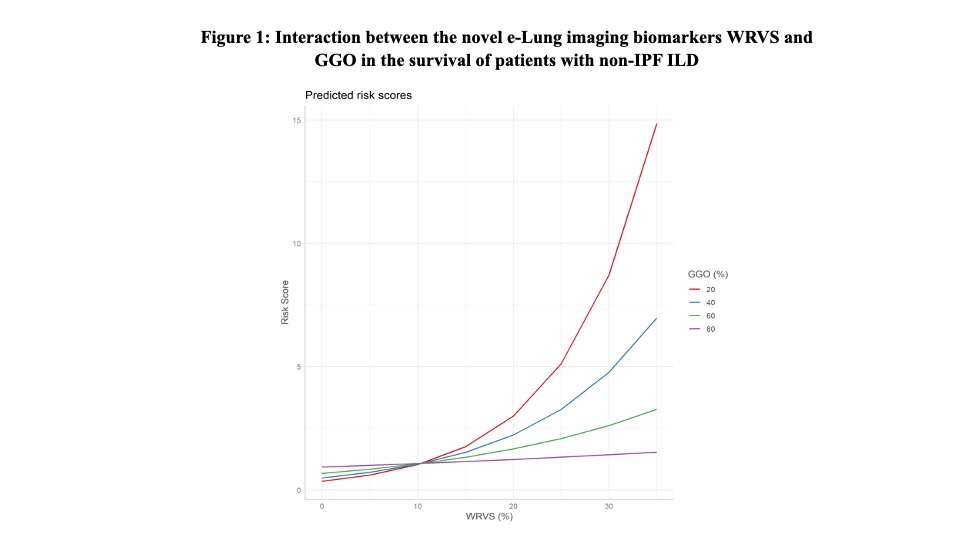Abstract
e-Lung (Brainomix, Oxford) is an AI-powered image processing module which quantifies imaging features on thoracic CT. The weighted reticulo-vascular score (WRVS) derived from e-Lung is prognostic in patients with interstitial lung disease (ILD). Using the OSIC database, we assessed a novel ground glass opacity (GGO) feature in patients with non-IPF fibrotic ILD.
In 110 patients, baseline WRVS was better associated with survival than FVC (C-index 0.64 v 0.58). There was an interaction between WRVS and GGO. Prognosis worsened for patients with less GGO and more WRVS, with worst outcomes for patients with WRVS >10% and GGO <30% (HR=5.0 CI 1.1?23.1, p=0.040, Figure 1). Increase in WRVS and GGO in combination with decline in FVC was more prognostic v FVC alone (C-index 0.81 vs 0.75). Adjusting for age and sex, patients with an increase in either WRVS or GGO between two CT time points had the lowest survival (Hazard Ratio 10 times higher) compared with those where neither increased.
These exploratory data suggest that the proportion of both GGO and WRVS provide prognostic information and add discriminatory power to FVC alone. Development of WRVS or GGO portends a poor prognosis challenging the paradigm that new GGO is indolent. GGO imaging biomarkers may provide valuable insights into the development of fibrosing ILD and offer mechanistic biomarkers for clinical trials.
